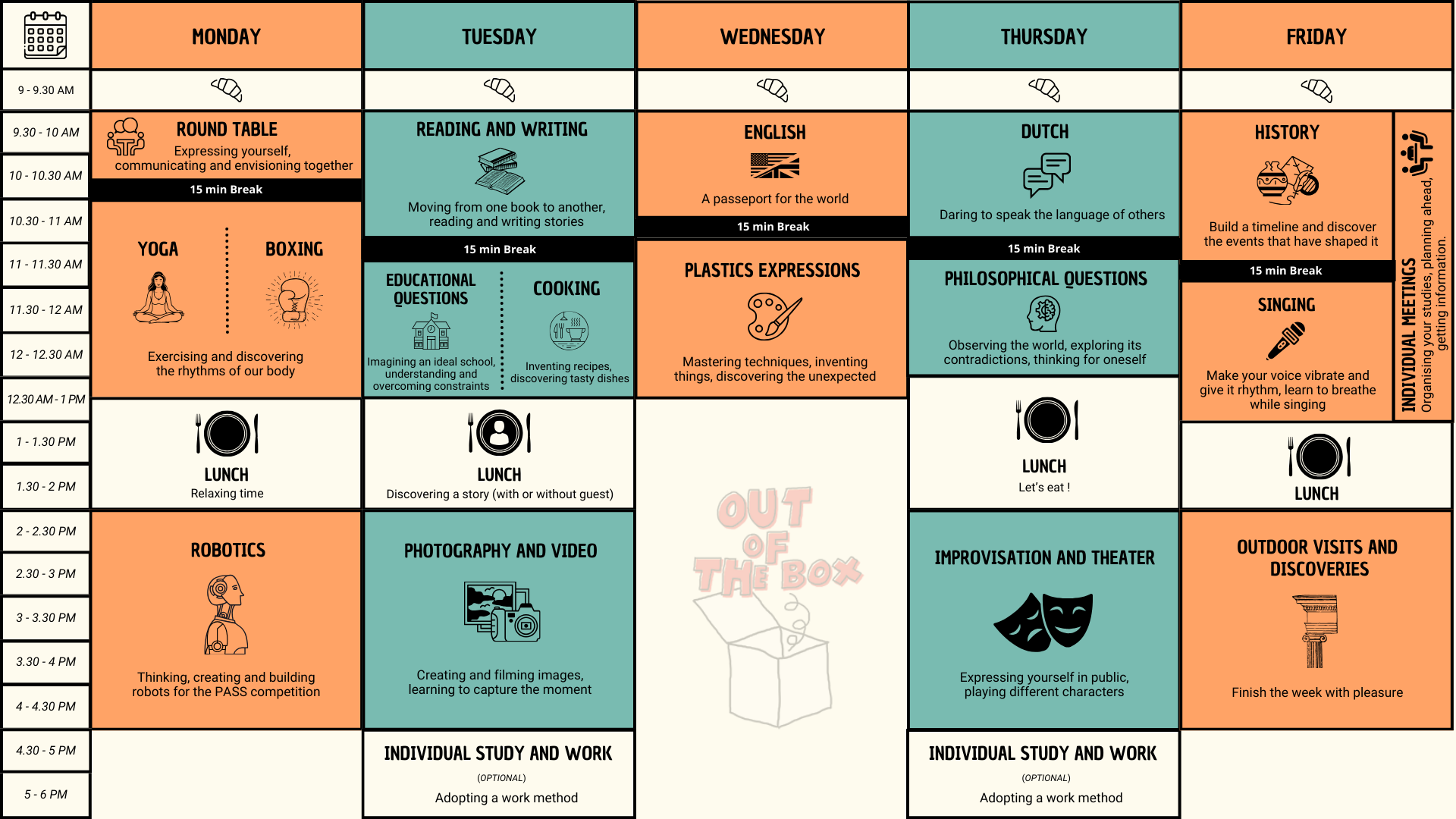Welcome to...
Out of the box

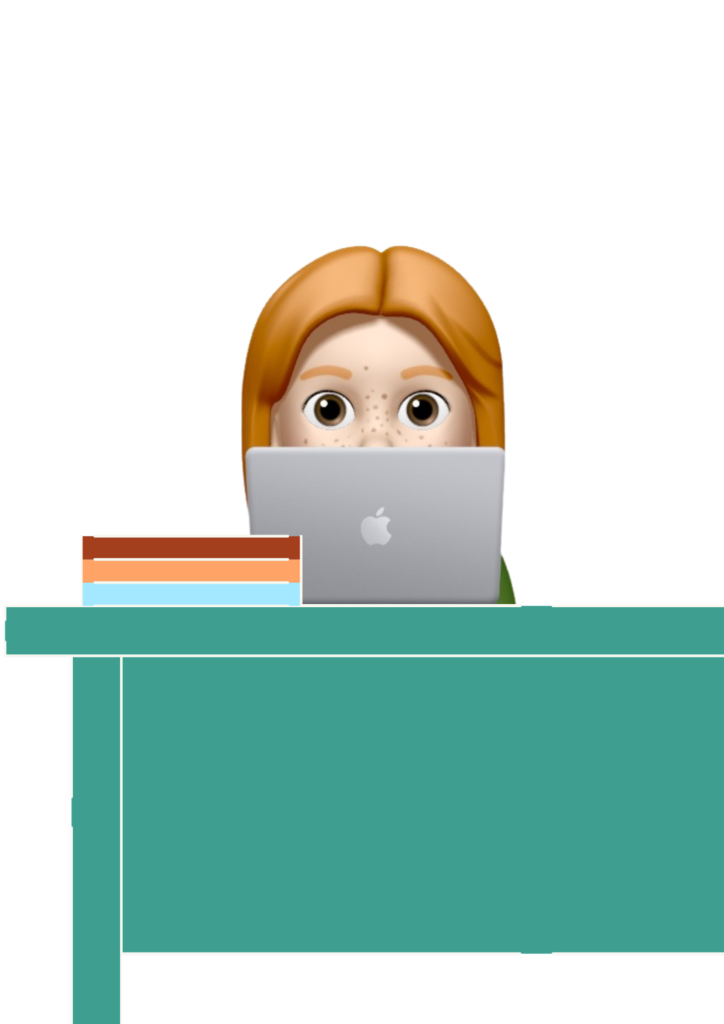
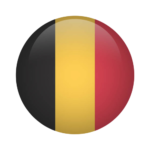
A little background...
We discovered by chance Out of the box when we were looking for original schools in Belgium on the web. Intrigued by their concept, we got in touch with them after exploring their website. The founder, Diane Hennebert, then agreed to give us an interview at her school. So, on 3 January 2022, we went to the site for our meeting. We were amused to discover that the school was located on the same street as the first school we had visited a few days earlier (BJAB): on Boulevard Louis Schmidt. Once the amusement of the coincidence had passed, we discovered the school and its very unique atmosphere.
Outside, a charming, refurbished red-brick building with large trees. If we had not known about it, we probably would not have suspected that it housed a school. We might have thought it was a cosy family home. We rang the doorbell, introduced ourselves and were let in.
Inside, the same artistic family atmosphere was palpable. Immaculate white walls, a beautiful renovated period staircase, everything very clean. There are books, an antique clock, paintings and artistic references and objects tastefully arranged everywhere. It was more like being in the home of an art enthusiast than a school. We were not able to visit the whole building, but the decoration of the entrance and the principal’s office set the tone.
We were then led to Diane Hennebert at the back of the school on a terrace overlooking a small garden. She was taking care of the flowers decorating the terrace, and suggested we do the interview outside on the terrace since the weather was fine.
All these elements prior to the interview may seem trivial, but with hindsight they allow us to share with you the atmosphere that reigns in this school. In fact, the interview confirmed all our first impressions, as you will discover…
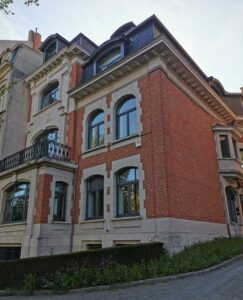
- Tuesday 3 May 2022
- Travel day 8
- 3rd school visited
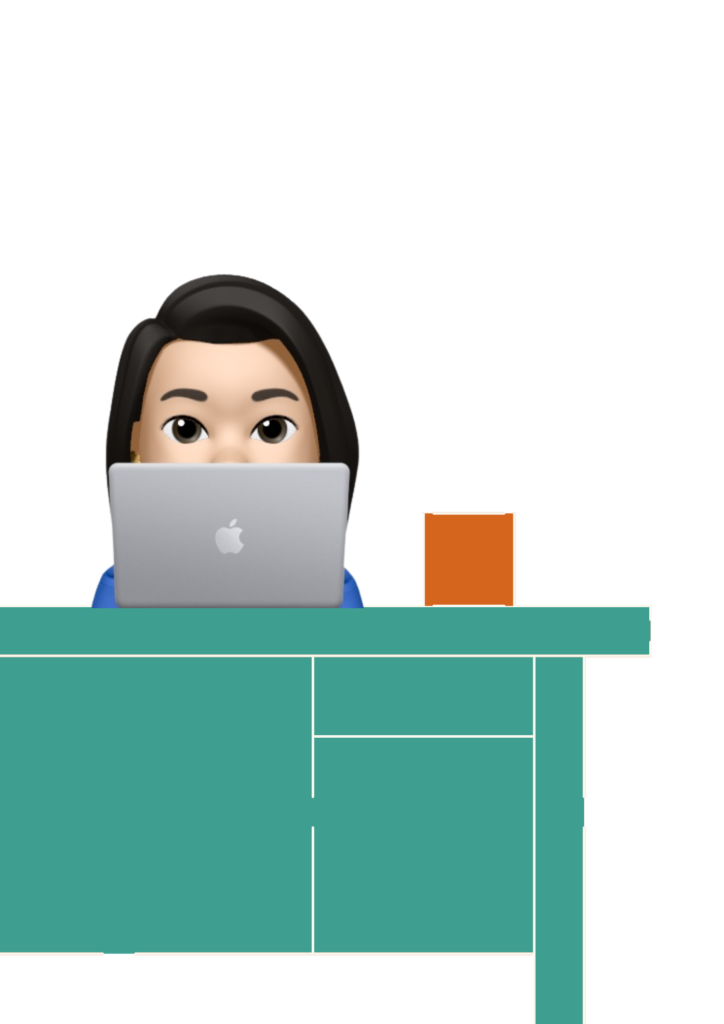
A creative education out of the box
Ready to discover Out of the box ?
The first thing you need to know about Out of the box may surprise you… It is not a school. Indeed, it is more of an educational workshop for young people aged between 15 and 20 who do not thrive in the traditional school system. The aim of this educational laboratory is to give or restore the desire and love of learning in young people from different social and cultural backgrounds who are often dropping out of school, and to restore their confidence in themselves and their abilities.
The idea is to support these young people personally, to give them time and importance, and to help them develop skills and projects by stimulating their creativity.
Out of the box should be seen as a gateway, a stepping stone that gives meaning back to the lives of these young people, enabling them to develop projects afterwards.
Let’s take a closer look at this atypical school and its values by exploring the portrait and project of its founder: Diane Hennebert.
If you need more background information, take a look at our page about the Belgian education system!
Because mottos are worth a thousand words...
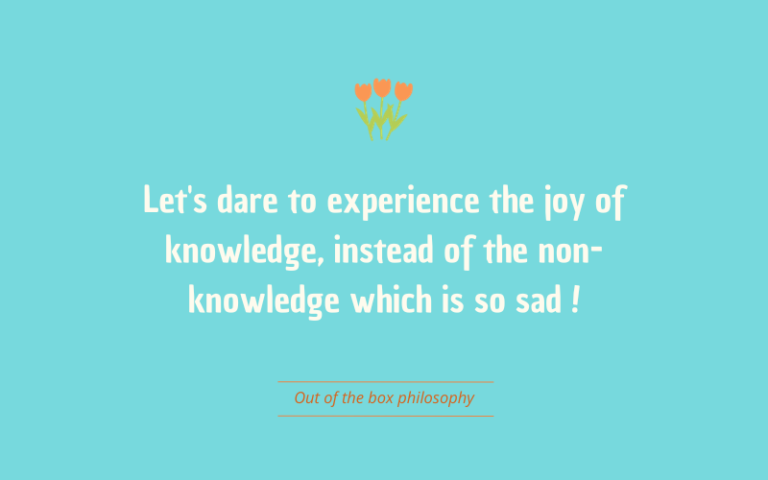
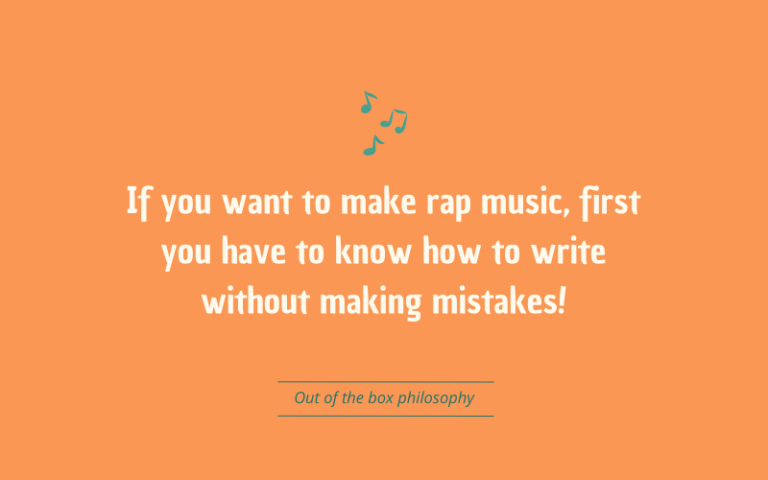
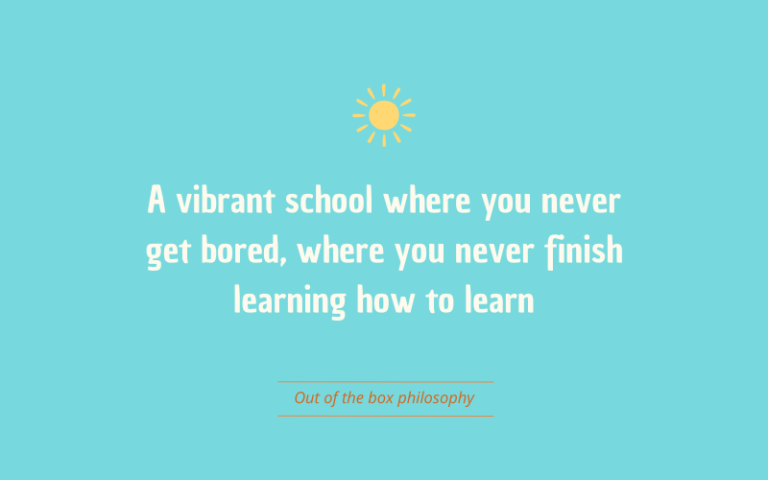
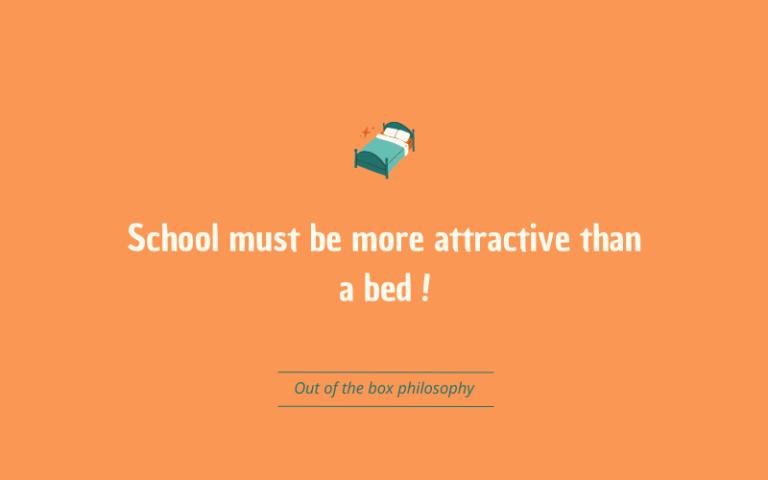
Genesis of the school
Behind this unusual school stands an equally unique and interesting personality whom we were lucky enough to meet: Diane Hennebert.
Before creating Out of the Box, she was at the head of numerous projects. As an Associate Professor in Philosophy, she has taught this subject at an university level. She soon turned her attention to more cultural occupations, successively becoming director of the Botanique and the Centre Wallonie-Bruxelles International in Paris. In 1993, she returned to Brussels and became head of the Fondation pour l’Architecture. Building on this experience in urban planning and architecture, she became director of the Atomium in 2001. Accompanied by her team, she worked on the rehabilitation of this monument, which has now become a symbol of the capital.
Then, Diane Hennebert took over as director of the Boghossian Foundation in 2007 and led the restoration of the Villa Empain. As part of her work at the Foundation, she is committed to strengthening the links between East and West through art and culture. She created schools in the Middle East, financed educational projects in the Middle East and Belgium, and organised artistic events, concerts and conferences… She has always loved the principle of transmission, through whatever medium. But one day, during a discussion with the writer Amin Maalouf, the latter pointed out to her that there was also a lot to be done in Europe in terms of education, and that school systems needed to be rethought to better meet the expectations of young people.
She was astonished to discover that 30% of teenagers in French-speaking Belgium are dropping out of school. She then delved deeper into the issue and discovered that the same percentage of teachers were not teaching because they were on sick leave, often for long periods. She gradually came to understand the seriousness of the situation and began to develop a project to remedy it.
My dream is to create a school that is something other than a school. An educational workshop of joy, of joyful learning, where creativity reigns in all areas (…) A vibrant school where you never get bored, where you never finish learning how to learn.
She then contacted a number of people to find out more about the drop-out issue. It became clear to her that democracy, and all that it implies, begins with education, and education is one of its essential conditions.
However, school is currently in crisis. The school drop-out rate is just one example of this reality. This is not something that public education is proud of. Reforms have been dragging on for years, such as the pact for excellence, and in practice nothing has changed.
The school is no longer in tune with today’s generation, it has not kept up with the changing times. Teachers are generally poorly trained, they cannot be replaced at the drop of a hat, there is a shortage of teachers in many subjects, there is not enough flexibility in the school system… these are some of the divisive issues highlighted by Diane Hennebert. There are three Service d’Accrochage Scolaire (SAS) in Brussels to combat school drop-out. But they are limited by the limited public resources deployed, being able to accommodate only 12 young people with staff who often belong to the long-term unemployed category.
Faced with all these realities, Diane Hennebert set up her own privately-funded educational workshop centred on art and creativity to give young people a renewed thirst for learning.To change things quickly.
The aim is to create complete, undivided individuals, where reason, body, emotions and feelings can express themselves together.
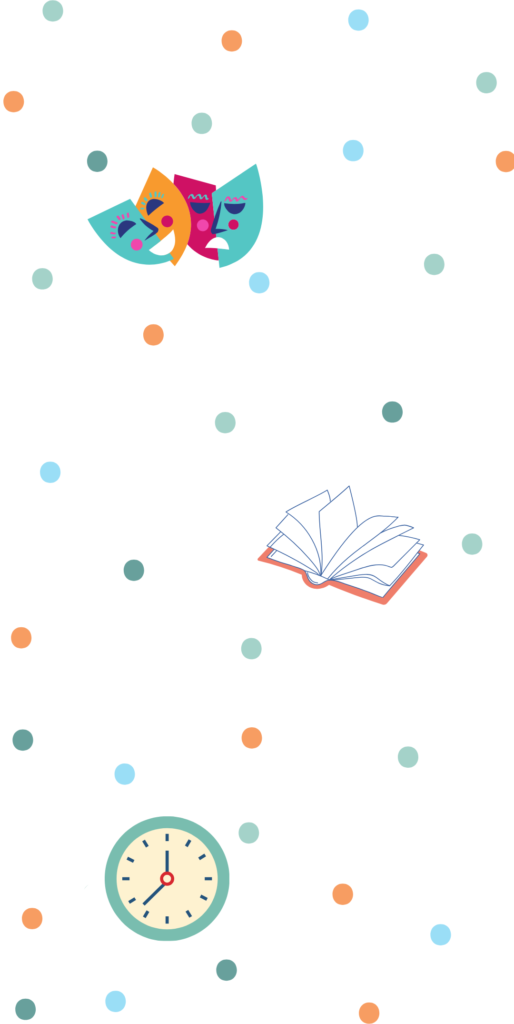
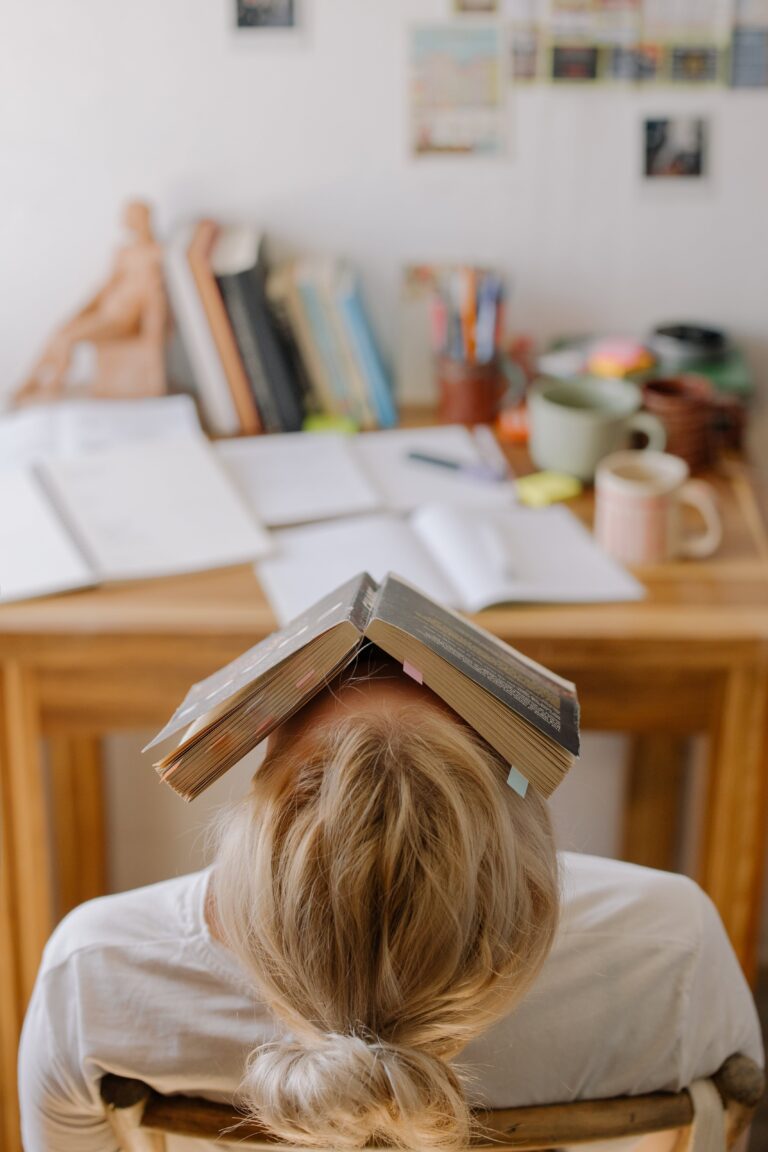
Pexels / @cottonbro-studio
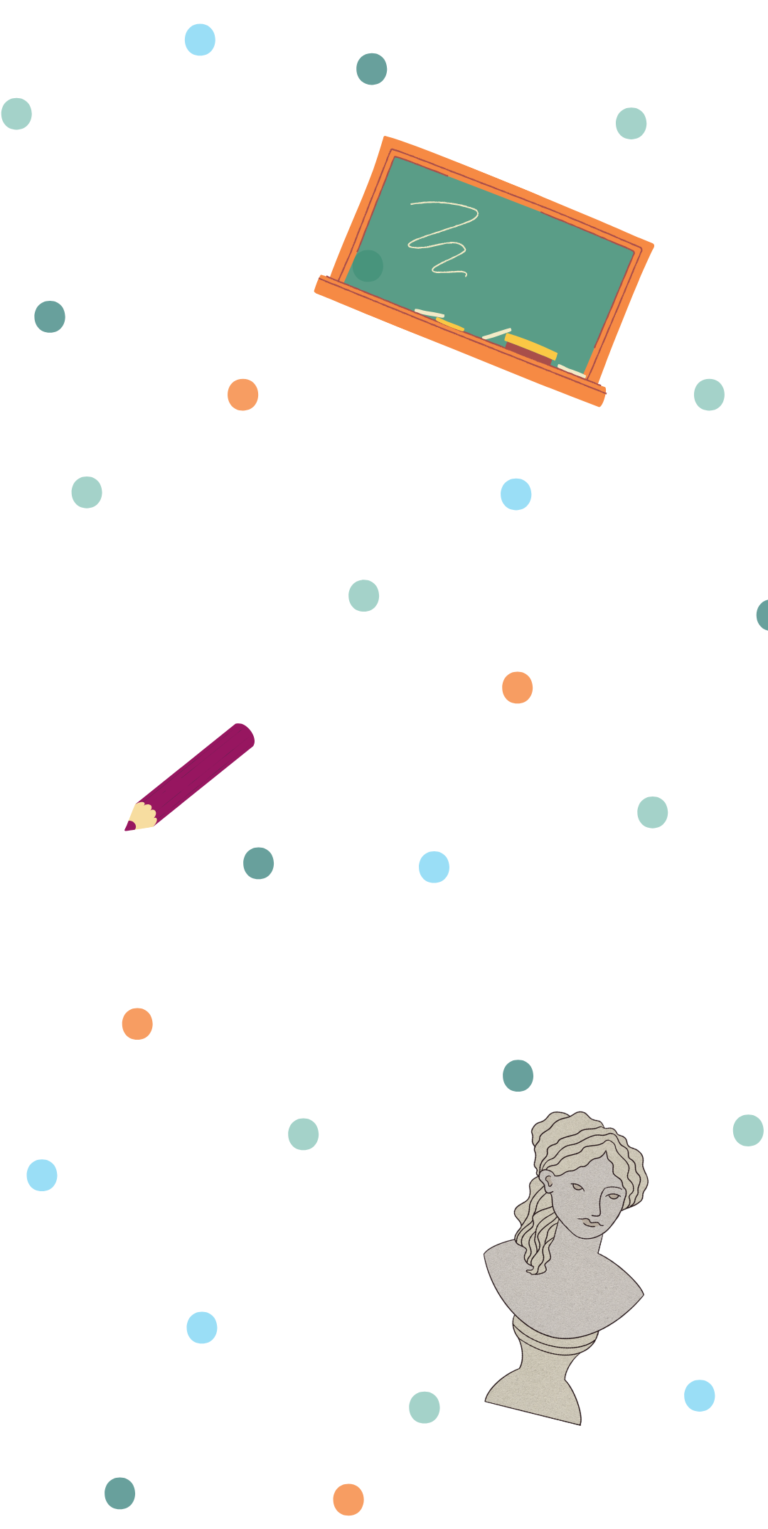
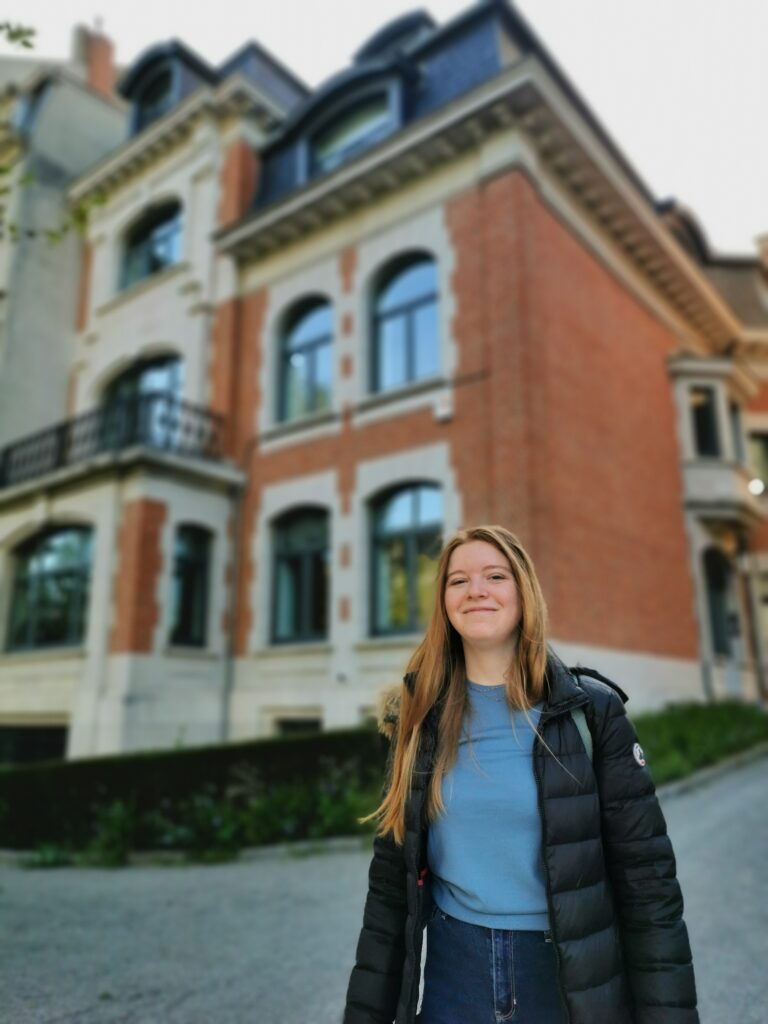

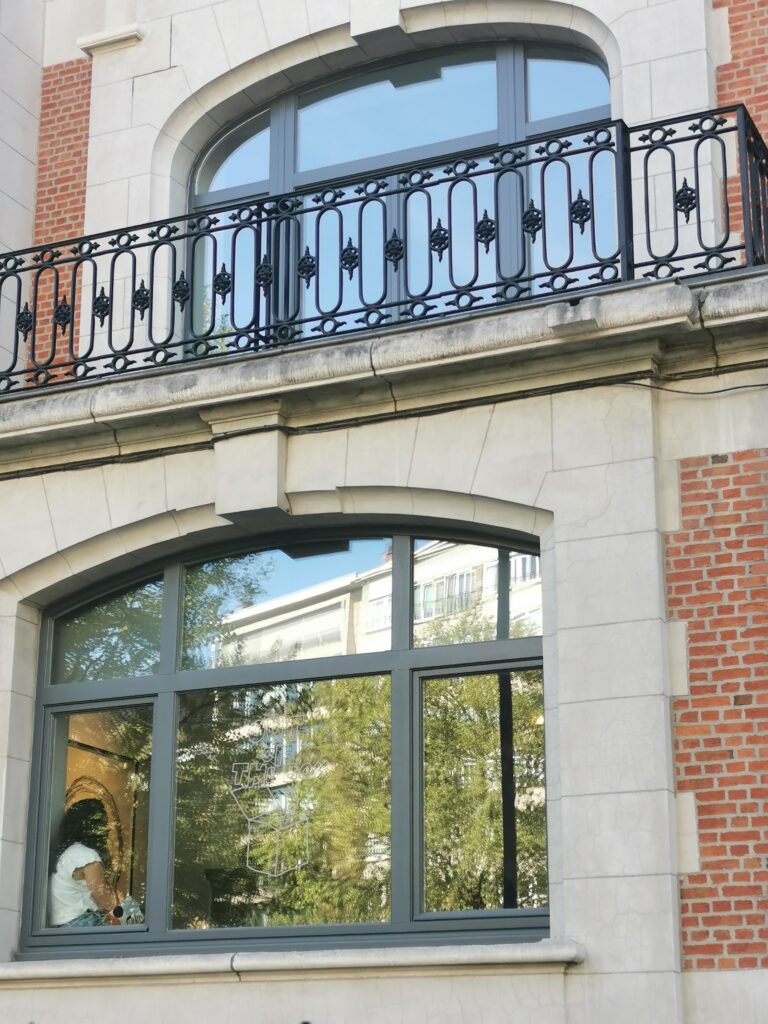

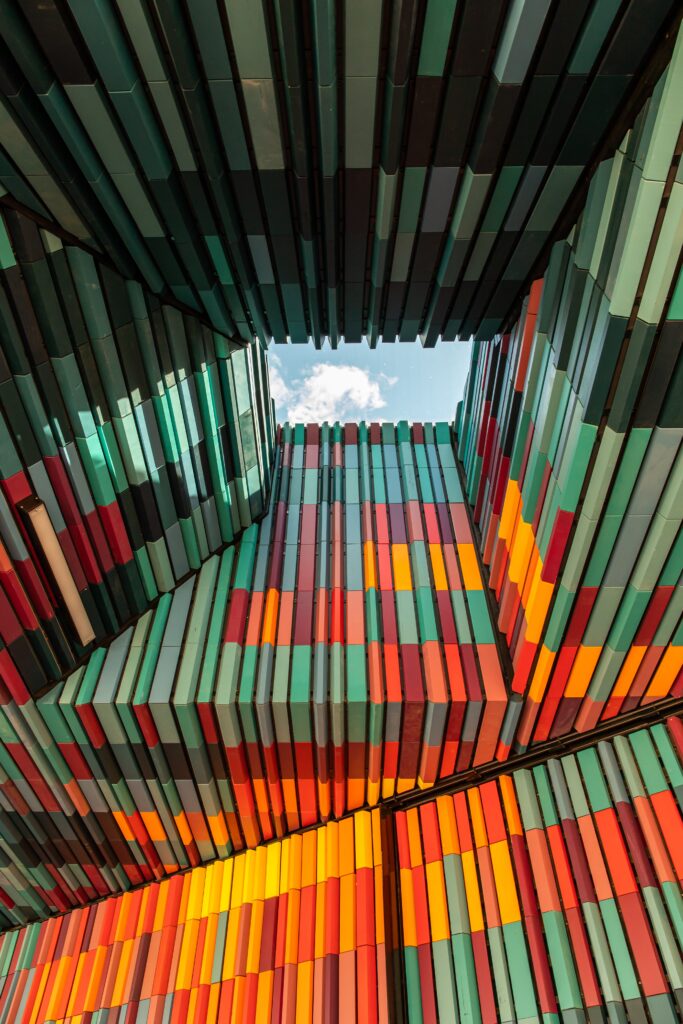
Pexels / @Mitchell Luoon
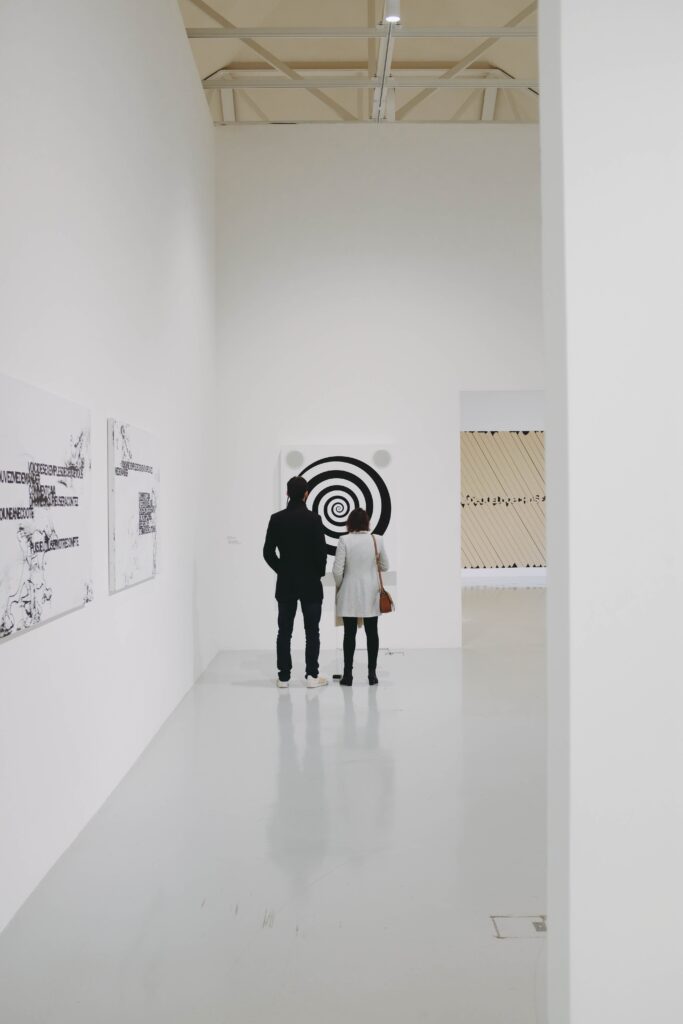
Pexels / @Adrien Olichon


Pexels / @Vlada Karpovich


Pexels / @anna-shvets
The Out of the box philosophy
The first aim of this educational laboratory is to get young people interested and willing again. Indeed, Out of the box wants to restore their sense of purpose.
The aim is to rekindle in them the desire to get up early in the morning, the desire to learn, the desire to see people and live with them, the desire to get out of the house. We are talking about desire here, not constraint; they need to have a genuine desire for all this. To achieve this, the workshop deploys seduction strategies. Diane Hennebert had an amusing but revealing saying during our interview that sums up what’s at stake here:
School should be more attractive than a bed !
The idea is to enable young people to joyfully develop their knowledge and skills. To achieve this, to rekindle the desire to learn and to do so with joy, Diane Hennebert explained to us that a school needs to meet 3 conditions:
- Quality: facilities, food, people, supervisors, excursions...
- Respect: treat young people as adults in the making
- Creativity: necessary in a changing world
QUALITY
For Diane, you have to give quality to lost young people to make them feel important. She explained that the first things she visits in a school are the toilets and the kitchens. Dirty toilets make pupils feel like they are pigs, as if they do not deserve clean spaces. At Out of the box, toilets are cleaned tree times a day. This topic can seem trivial but it is actually of primary importance. what pupils are given in terms of equipment, facilities and attention is really a reflection of how adults perceive them, of what they are worth.
Therefore, at Out of the box, Diane Hennebert offers them the best because they deserve it. As I mentioned earlier, the school has been refurbished and is very nice and clean. There are works of art on the wall that have not been damaged because you do not damage quality things. They eat tasty, healthy, home-cooked food on tables with tablecloths. They receive prestigious guests. They are accompanied by a large enough teaching team to give them quality time.
In short, everything, from the premises to the teaching staff, from the meals to the outings, is based on quality. This helps to boost these teenagers’ self-esteem and makes them more receptive.
RESPECT
Adolescence is a complicated time. This is a phase in a person’s development where things change very quickly, for the better or for the worse, depending on the advice, the encounters and the situations. Teenagers are neither quite children, nor quite adults. It is therefore often difficult for teachers and parents to know where to set the bar.
Diane Hennebert is fascinated by this period where teenagers are undergoing a massive metamorphosis. For her, we have to treat these teenagers with respect by acknowledging their adult part. They are adults in the making. They are at a turning point in their lives where they need some freedom. At Out o the box, the team tries to find the right balance between support and freedom. For example, they are under no obligation to come to class. But when they do not show up, someone calls them to understand what is happening to them, to encourage them.
Another very important point at out of the box is not to treat teenagers like a herd. Our 25-strong teaching team means that on average 6/7 people are present at the same time for around twenty students. Pupils are treated as individuals in their own right, with their own special needs, so that they can be given the best possible help.
All this is part of the respect owed to each individual and is a central point in guaranteeing their development as complete and fulfilled adults.
CREATIVITY
Today’s generation is witnessing the end of one world and the advent of a new one. It is a complex time in which to grow up, characterized by a loss of bearings. For Diane Hennebert, in such times, the key is to be able to be creative. Indeed, in a constantly changing world, young people must be able to be agile, to have a pan A but also a plan B, a plan C, a plan D… We must teach to young people how to draw new and innovative connexions between worlds, domains, ideas… And all of that come from nurturing their creativity.
Art and culture must not be reduced to a school topic to master. At Out of the box, they are considered as a mentality, a mindset. Indeed, discovering the world of culture and art enables teenagers to develop a critical mind, to set things into perspectives, to have references, to create links between things, to become curious, to grow as human being… All these skills are necessary in today’s world and can be conveyed through Art and creativity. Therefore, they are at the heart of Out of the box philosophy.
Driven by those values, the Out of the box team works to hand down a set of knowledge and skills to the students. Here are the main tools the students have when they leave the workshop:
 Toolbox 🛠
Toolbox 🛠
- Curiosity: developing a critical mind, stop spending hours on tik tok
- Self-esteem: building self-confidence, knowing your worth
- Creativity: creating new connections between unrelated things
To pass on all this to the students, a dedicated team has been put together to supervise them. Paradoxically, there are very few professional teachers at this school. The reason for this? Many of the students who arrive at out of the box have been traumatized by the existing school system, and often reject teachers with traditional methods to which they do not adhere.
Instead, they recruit professionals in various fields who love teaching and have alternative teaching methods. As a result, the teaching team includes a wide range of profiles and professions, as the list below shows:
- Publisher & writer
- sports coach
- Photographer
- psychologist & psychiatrist
- Geographer
- Philosopher
- Videographer
- plastic artist
- Yogi
- actor
- singer
- industrial designer
- art historian
- Teacher
They implement a fun, participative, cross-disciplinary pedagogy. For example, when they arrived at Out of the box, a lot of teenagers are afraid, or even traumatized, by mathematics. To counter that, the team start by teaching the teenagers how to play chess. This game convokes a reasoning process similar to the one used in mathematics. When the students win 3 games in a row, they win a bottle of champagne to share with the other. In that way, something they were afraid of become something playful and festive. This is a very good example of the Out of the box approach.
More generally, the team attaches importance to the relationships with the students. Contact and human relations are fundamental for a teenager to grow, especially at a time where screens are everywhere. Therefore, the team implements the ATL method:
Attention - Time - Love
It is the miracle recipe to help teenagers blossom!
There is on last crucial characteristic of the workshop to tackle : the social and cultural diversity among students.
Indeed, it is important for the team to have a real melting pot. So there are children from the aristocracy, others from the streets, migrants… and all sorts of different cultural and socio-economic backgrounds! Among the students, who have often been the victim of school bullying , there is no judgement but a real sense of solidarity. The team teach the students that their difference is a treasure. Thus, the young people create very strong friendships with people from other backgrounds and cultures that they would never have met elsewhere.
This social diversity is made possible by the generous donations that Out of the Box receives and by the sponsorship system. They have set up a system of godfathers and godmothers to pay the school fees of young people with limited financial resources. The students’ families pay what they can, from €0 to a maximum of €300 a month. This creates a real equality of opportunity!
However, Out of the box can only accept around thirty students at a time, in order to preserve the family atmosphere and ensure that all students receive individual attention. As a result, there is a waiting list of 6,000 students, as the workshop has proved its worth. However, despite this limit, students spend between 3 and 9 months at Out of the Box, before leaving, necessarily with a project (professional life, going back to school, etc.). This means that there is a real turnover and that we can keep the idea that Out of the box is first and foremost a “repair workshop“, a stepping stone towards a good life!
A typical year at Out of the box
At Out of the box, imagination and humour are introduced into the training, Arts and games are coupled with learning. No matter how much time young people spend in the workshop, this original programme allows them to discover themselves, the world around them and its endless potential, while combining fun with perseverance. To do so, Out of the box has a multi-disciplinary approach which combines traditional and untraditional topics as shown below:
- Yoga
- Philosophy
- Cooking
- Robotics
- singing
- History
- Photography & video making
- Hip Hop
- Plastic expression
- Dutch
- Theater & improvisation
- Reading and writing
- Boxing
- Educational questions
- english
- Humour & self-mockery
These different disciplines enable young people to broaden their horizons and keep up with current times. Diane Hennerbet and the entire teaching team are well aware that the world is changing and going digital very quickly. So there are technological subjects that stimulate creativity, such as video and photography, and robotics. Moreover, the school was awarded a jury prize in the Robotix’s competition!
However, original subjects are not the only things that punctuate students’ weeks. Every Tuesday lunchtime, the teenagers have the chance to have lunch with well-known personalities or former students. This allows them to discover inspiring figures and careers!
In addition, every Friday afternoon, we take them on an outing: to see an exhibition, attend a concert, etc. The idea is to make the end of the week a festive one, while awakening new interests in them.
In this way, Out of the Box seems to have found a very interesting balance between purely academic work and personal development (curiosity, creativity, etc.). A typical week in this workshop is a very good indicator of this balance:
This schedule shows that it’s not just students who have responsibilities, but parents too. Every two weeks, meetings are organized with parents, teenagers and psychologists to discuss education. These meetings are of crucial importance, as they help to nurture the dynamic triangle between teacher, child and parent. Diane Hennebert explained to us that if the dialogue between these players is not working, everything is pointless. Parents can destroy everything the teenagers learned at school. Therefore, the idea is to improve the parent-child dialogue.
In the same spirit, the workshop offers personalized psychological support to young people who so wish. However, Diane Hennebert insists that this counselling must not lead to the disempowerment of teenagers. They must not consider themselves as victims but as actors of their own lives.
Personal development is therefore an important part of the students’ week, whether it is through philosophy classes, sharing moments or meetings with the psychotherapists.
However, while there is a weekly programme, not all weeks are the same. For example, the last week of the year is very special at Out of the box…
However, while there is a weekly programme, not all weeks are the same.
For example, every year the young people visit elderly people. They have noticed that the elderly can be afraid of young people and have tried to find out why. The result is an interesting dialogue between two generations trying to understand each other. Some years, these encounters even give rise to photographic projects.
So, these kinds of events can break the routine. But the major event doing so remains the last week of the year which is very special at Out of the box…
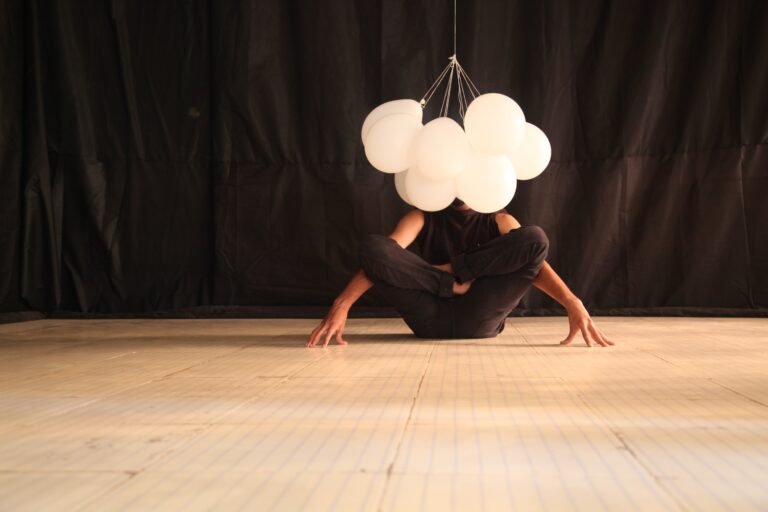
Pexels / @Ankush (Yogletics)
At the end of each school year is organized a week in nature.
At the end of June, the students share one last moment with their educators, and their fellow students before their big departure. This week is punctuated by various events such as :
- Sports activities: swimming, horse riding, tennis, dance, boxing…
- Artistic activities: arts and crafts, sewing, woodwork, gardening…
- Outdoor evenings: campfires, treasure hunts in the forest…
However, despite all of these exciting activities, the main event of the week is the annual show organized by the students. The students do everything with their own hands: the costumes, the music… In 2022, their performance was centred on the reconstruction of La maison couchée (the lying house) de Jean-François Fourtou in the countryside. The artist came to help set up the upside-down house which flew away with the students. Once again, these young people are involved in creative projects of obvious quality, accompanied by contemporary artists and their creations. A real privilege for them!
This final week sums up the spirit of Out of the Box, based on personal development, quality, freedom, sharing and creativity!

Pexels / @leeloo-thefirst
Art is what makes life more interesting than art.
Robert Filliou
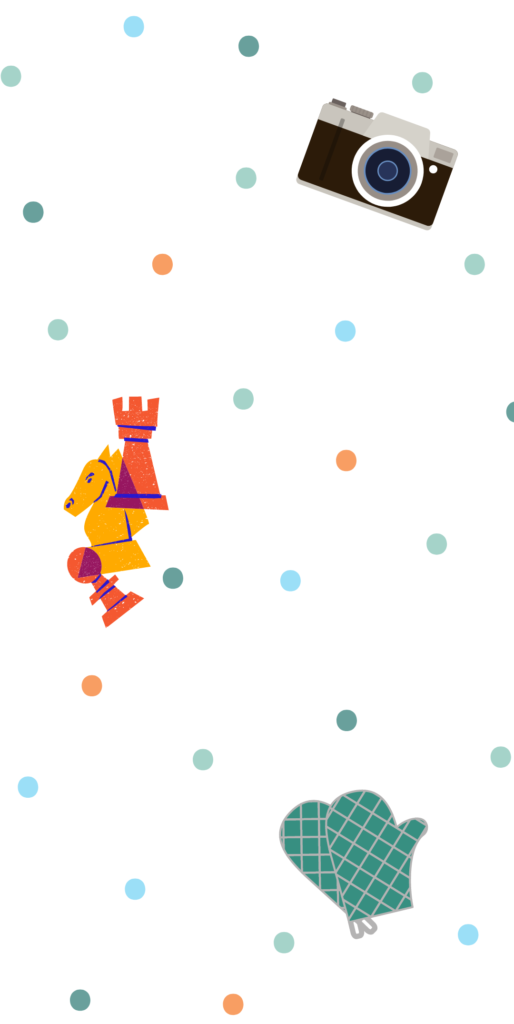
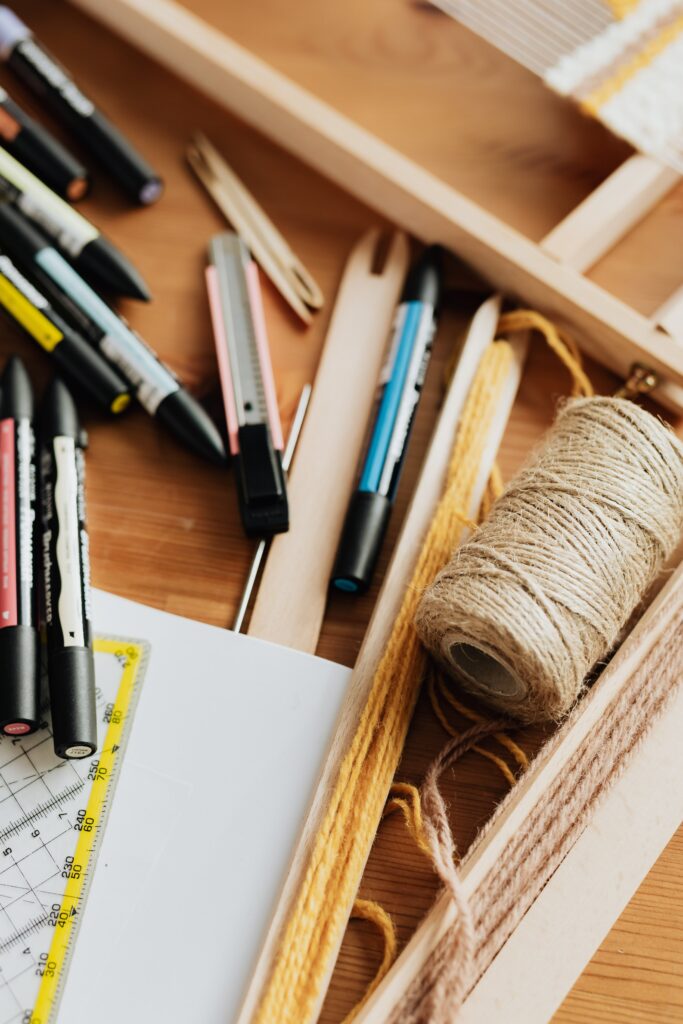
Pexels / @Karolina Grabowska
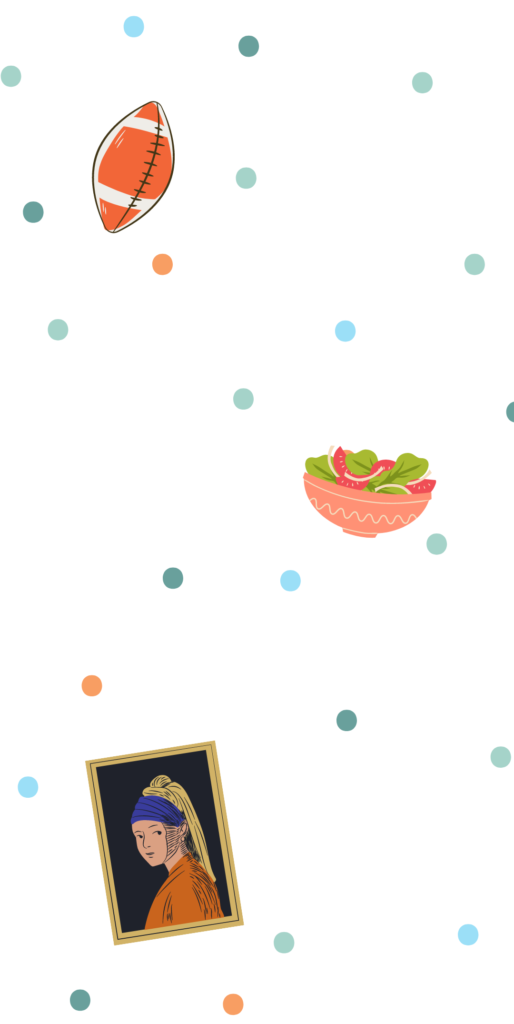

Pexels / @Lucas Pezeta
Everything is ok at the end.
If it is not ok,
it is not the end.

PExels / @Brett Sayles

Article written by
MARIE FERRAN
published the 12/10/2023
What inspired us

The central place given to Art is very interesting in this workshop. Art is not a hobby or an option at Out of the box, but a way of living and thinking. Creativity run through all the components of the workshop. This allows students to grow both academically and personally. This dual dimension of culture is absolutely fascinating and should be replicated in many schools. Especially at a time when creativity is becoming a key skill.

Quality is one of the core element of Out of the box. First, as in other schools, with the quality of the teaching. But also about other elements that may seem trival but are of the utmost importance : the quality of the school premises (decoration, cleanliness), the quality of the time devoted to students, the quality of parent-teacher-student relations…

Diversity is another of the core element of Out of the box. The subjects taught are as original as they are complementary. They enable students to broaden their horizons and continually stimulate their creativity, whether in artistic, technological or more traditional courses.
Key words
Creativity & Art
School drop-out
Freedom
Relationship with students
Relationship with parents
Inequalities
Our latest articles

Ewelina Smialeck
![]()
A polish english teacher passionated about education who includes new digital tools in her courses.
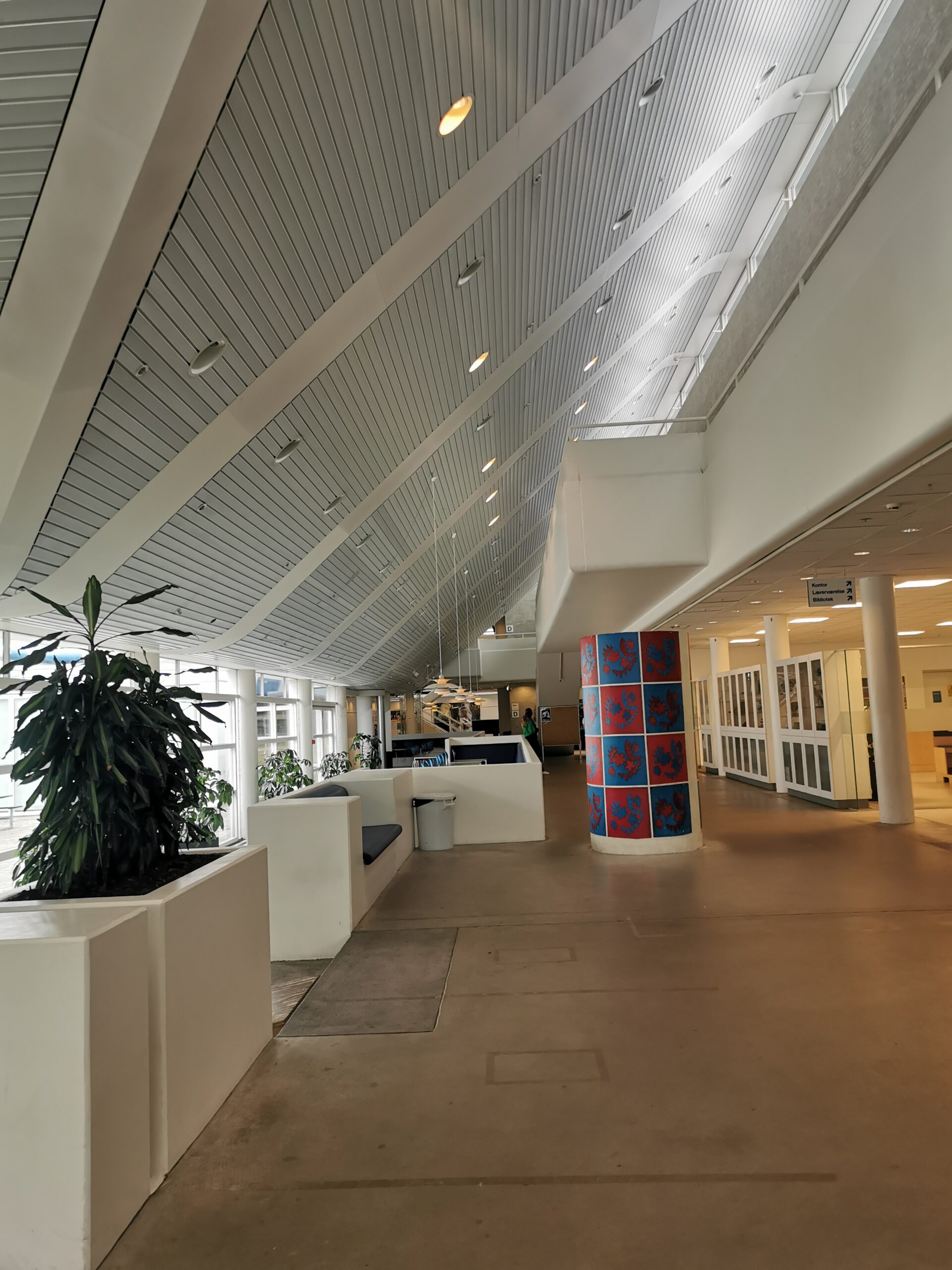
Høje Tasstrup Gymnasium
![]()
A Danish public highschool specialized in welcoming students with special needs or/and with foreign backgrounds.

Ferdinand Geib
![]()
A German Biology and Geography teacher explaining his highly contemporary vision of the role of school today.

